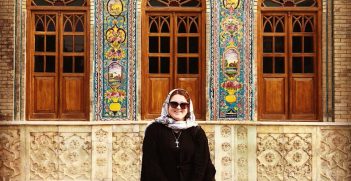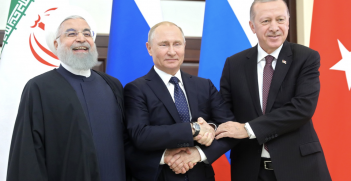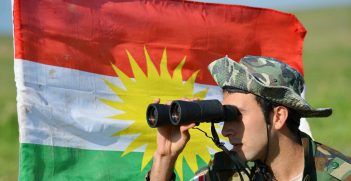Counterinsurgency's Impossible Trilemma: Is It Possible to Be Resolved After Suleimani's Killing?

Ten years after Lorenzo Zambernardi’s seminal paper entitled “Counterinsurgency’s Impossible Trilemma,” what is the reality of this trilemma today? Is it possible to trace regional changes in the concept after Qasem Suleimani’s death? Are we on the eve of global strategic changes in the Western/Eastern way of warfare and confrontation?
Introduction: From Counter-Insurgency Campaigns to What?
Ten years after Zambernardi’s brilliant idea of a trilemma existing between civil population safety, conventional force protection, and the effectiveness of fighting against “insurgents,” scholars and practitioners have since continued to debate counterinsurgency’s logic, goals, and chances of success.
After Suleimani’s killing in January 2020, politicians, theorists, and commentators of international relations have proposed different scenarios, public policy implications, recommendations, and possible responses from Iran. Is a new trilemma developing?
Different Standpoints
Some have argued that Suleimani’s killing will ignite a great bonfire of new hostilities in the Middle East. It is part of an esclation game that could spiral towards a possible new “major war.” Some have also considered the emergence of a new kind of threat for the US, including “blind spots” such as the mobilisation of Shia diaspora in South America (seen as externally displaced “insurgents”, following the logic that “what happens there matters here”).
Others, on the other hand, have considered the event in quite positive terms, as it will be a credible, decisive, and ultimate deterrent against future hostile actions by Iranian. They believe that there will be little repercussions for the US: to a certain extent, Soleimani’s killing was too high up the Iranian leadership “ladder” for a similar level of retaliation to take place against a US leader; or too high up the “Herman Khan” ladder to be replicable.
A Complex Threat Survey
Proxy and asymmetric instruments of Iran in Iraq, Lebanon, and elsewhere are quite diversified and a geographical survey of threat levels is very difficult to conduct. How should actors assess the new level of force protection to be established for US troops and embassies around the world?
And, on the other side of the new Iranian trilemma, how does the West appropriately evaluate the human terrain system (HTS) (or the “human geography”) of the Middle East? The picture is quite varied here, especially if we consider the cases made and offered by hardliner Sunnis in Syria or Egypt (Arabs) after the killing, who saw it in a positive light. However, on the opposite side, there are promises of revenge made by other parts of the Islamic world (Iranians and proxies).
To sum up, what are the trade-offs involved in the new “proxy actions” the US could face in 2020 (and probably also in the following years)? Some of the following ideas for a new strategy and way of thinking should be adopted.
Applying The Trilemma to Iran, Iraq, And The Middle East Today
The physical elimination of Suleimani changes the game because it heightens tensions. Qasem Suleimani was not an informal high value “insurgent,” as Osama Bin Laden or Abu Bakr Al Baghdadi were, but an official of a state. The anger of the Iranian populace could remain constant, even in the wake of the Ukraine airliner downing and questions regarding international law begin to appear.
In the second part of the trilemma, if we look at force protection from the perspective of the US, the situation was was already highly volatile even before the attack. The killing of a US contractor in Iraq and the attack against the US Embassy in Baghdad echoes past flashpoints, such as the 1979 Tehran hostage crisis. Going forward, how should we assess possible procedures in the macro and micro attack/defence game?
Finally – in the third part of the trilemma – distinguishing between enemy combatants and non-combatants will be more and more difficult. This is due to the volatile situation we have in the MENA Human Terrain System and the “jeopardised minds” in the Islamic world. In this sense, as recalled by David Miliband, former British Secretary of State for Foreign and Commonwealth Affairs “words such as Arab an Islam hide and conceal as much as they reveal.”
Conclusion
The triangle of the trilemma is changing in shape and components after the Suleimani killing. In the coming months, we will know the new nature of the situation and the factors that we will have to consider. Over the next months, this is likely to become one of the most important challenges for the Trump administration.
Trump’s decision to send additional soldiers to Iraq and the Middle East should, therefore, also be understood through the lens provided by the (new) Iranian trilemma. Trump has once again changed military historian John Keegan’s old paradigm: he has moved from a ”collective killing for a collective purpose,” to a “targeted high value killing for a (supposed) collective purpose.”
To what degree should we share a collective risk for this purpose? Or have we have gained a new line of deterrence? The events of these coming days will answer this question. And they will offer a clearer picture.
Diego Bolchini is a cultural analyst based in Rome, Italy. He is a Gino Germani Institute Associate Research Fellow and IAI (Istituto Affari Internazionali) think tank contributor. Diego reads security studies at Florence University and has been an instructor in security seminars jointly organised by the University of Buckingham (UK) and the GeoLab Laboratory for Geocultural Analyses, Ionian University (Greece).
This article is published under a Creative Commons Licence and may be republished with attribution.





